Last weekend I was in China for Historic Shanghai's Art Deco Weekend 2.
Both days consisted of presentations and lunch at the former Chinese YMCA (now the Metropolo Hotel) followed by a two-hour walking tour in the afternoon.
 |
| Entrance, former Chinese YMCA, Shanghai (Poy Gum Lee, 1934) |
Saturday commenced with the keynote address on Historic Preservation in Shanghai by Professor Ruan Yisan from Tongji University. Professor Ruan's presentation was passionate and amusing as he relayed some of his key preservation successes since the early 1980s. Often pitted against local mayors and government officials he has been threatened with jail but continues to fight for the adoption of master plans for the preservation and re-development of important historic areas.
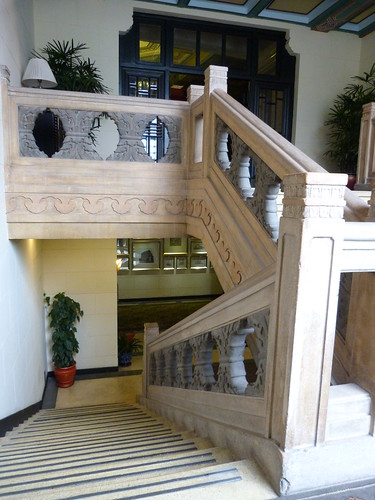 |
| Stairs, former Chinese YMCA, Shanghai (Poy Gum Lee, 1934) |
The second presentation of the morning was by Virag Csejdy on Laszlo Hudec: The Race Course Buildings. Virag is a relative of Hudec and is curator at the Hudec Heritage Project. Her talk covered Hudec's journey from Hungary to Shanghai via time as a Russian prisoner of war during WWI before focusing on three key Shanghai Hudec buildings - Moore Memorial Methodist Church (1931), Park Hotel (1934) and Grand Theater (1933).
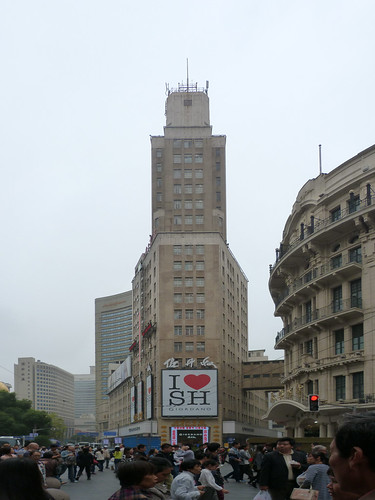 |
| Wing On Department Store, Shanghai (Elliott Hazzard, 1933) |
The walking tour took us around the former Shanghai Race Course. Gambling was banned on Mainland China in 1949 and the former race course is now the People's Park. The tour included a school, a hospital, Shanghai lane houses, some large Deco department stores in Nanjing Road East and the Hudec buildings from Virag Csejdy morning presentation.
 |
| Foyer, Grand Theater, Shanghai (Laszlo Hudec, 1933) |
Sunday's first presentation looked at Shanghai Art Deco Design. Presented by Dr Karolina Pawlik of University of Silesia/Shanghai University it compared and contrasted how Western artists and Chinese artists portrayed China during the Deco period.
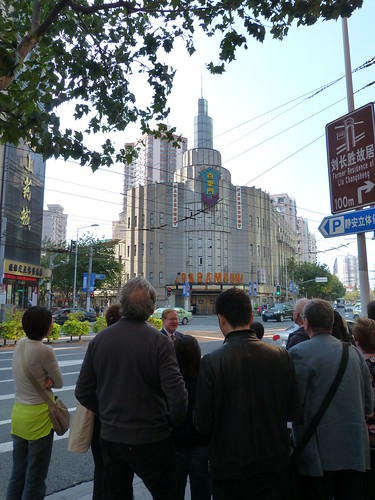 |
| Paramount Ballroom (S C Young, 1933) |
After lunch a bus dropped us off at the Paramount Ballroom for the start of our walking tour along Bubbling Well Road (now Nanjing Road West). The tour included many apartment blocks and a couple of stand-out Deco mansions.
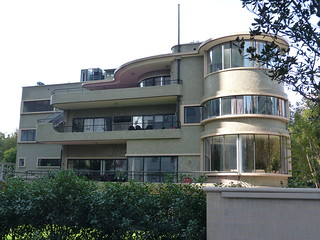 |
| Woo Villa (Laszlo Hudec, 1938) |
Woo Villa, now Shanghai Urban Planning and Design Research Institute was designed in 1938 by Laszlo Hudec and the Pei Mansion which was built in 1934 and is now an hotel.
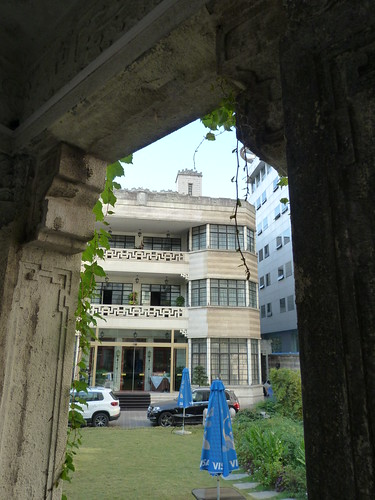 |
| Pei Mansion (1934) |
From my point of view, Art Deco Weekend 2 was a great success. I learnt a lot and saw many buildings that I hadn't seen before.
For Historic Shanghai it was part of their preparations for the Shanghai World Congress on Art Deco, 2-6 November 2015. I helped with those preparations by getting lost at the third building on the first walking tour. You know, I just had one more picture to take. I was reunited with the group at the next building so everything was OK. Anyway we all paid more attention after that and I don't think anyone else got lost over the weekend.
For more information on next year's World Congress you can visit the Shanghai Art Deco website.

Fascinating story, and beautiful buildings. This must have been a wonderful opportunity--wish I had been there. I especially love the Woo Villa.
ReplyDeleteThanks Suz. The Woo Villa is great. We were lucky to get a bit higher than street level to grab a quick shot.
DeleteI am a bit late to comment. Sorry. But the foyer of the Grand Theatre in Shanghai still looks rich and gorgeous. Deco could be very opulent, couldn't it?
ReplyDeleteNever too late to comment Hels. This is the back foyer that leads to the a couple of cinemas (I presume added later), emergency exits and restrooms. The main foyer has a staircase with a great balustrade and throughout, the floor has inlaid abstract figures which some people say Hudec designed as some sort of code but our guide had never been able to work it out, and he is a fairly smart bloke who's been living in Shanghai for many, many years.
DeleteI especially love the Woo Villa.
ReplyDeleteThanks Nelly,
DeleteWoo Villa is fairly special. We were lucky to get that view.